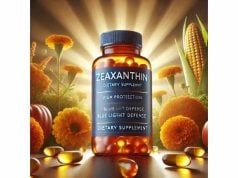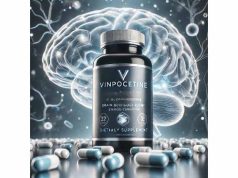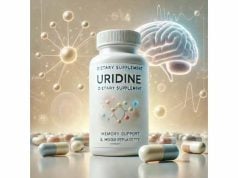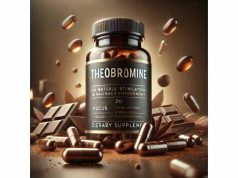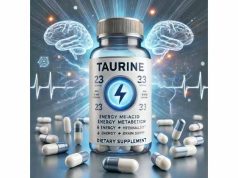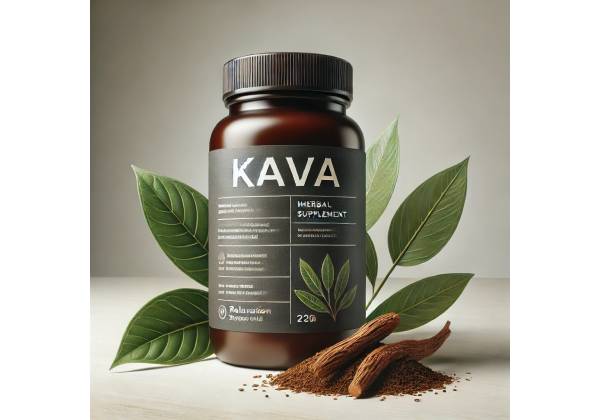
Kava is a centuries-old botanical that continues to captivate modern science for its calming, mood-enhancing, and focus-improving attributes. Sourced from the roots of the Piper methysticum plant, which flourishes in the South Pacific, this herbal supplement has been used in traditional ceremonies for fostering social harmony and easing stress. More recently, kava has gained recognition as a natural aid for managing anxiety, restlessness, and a range of psychiatric concerns. In this comprehensive guide, we will delve into kava’s origins, its mechanisms of action in the human brain, and practical steps to make the most of its benefits for mental and emotional well-being.
Table of Contents
- What Is Kava? Essential Foundations and Historical Insight
- Mechanisms by Which Kava Encourages Mental Balance and Cognitive Clarity
- Major Advantages of Kava for Psychiatric Concerns
- Practical Approaches to Using Kava
- Key Research and Scientific Discussion
- Frequently Asked Questions
- References and Sources
What Is Kava? Essential Foundations and Historical Insight
Kava, or Piper methysticum, is a tropical shrub-like plant native to islands in the South Pacific—particularly Fiji, Vanuatu, Tonga, and Samoa. The word “methysticum” translates to “intoxicating” in Greek, hinting at the plant’s calming and mildly euphoric effects. For countless generations, Pacific Islanders have cultivated kava for ceremonial and social events, viewing it as a vital element in community bonding and conflict resolution.
Historical Context and Cultural Significance
- Communal Rituals
In Polynesian, Micronesian, and Melanesian cultures, kava has long played a role in rituals meant to enhance goodwill, settle disputes, and welcome guests. Kava ceremonies are typically marked by respectful sharing of the beverage in coconut shells or communal cups. - Medicinal Uses
Traditional healers and elders have used kava for stress relief, pain management, and sedation. Elders often prescribe it to reduce tension after strenuous labor and to promote harmonious social interactions. - Spreading Popularity
During the colonial era, travelers and explorers began bringing news of kava’s unique effects back to Europe, Australia, and North America. Over time, its calming influence, coupled with anecdotal benefits for mental health, attracted researchers and health enthusiasts worldwide.
Plant Biology and Active Compounds
The rootstock of the kava plant is where its potency resides. Specifically, kava’s psychoactive properties derive from compounds known as kavalactones. Some of the most significant kavalactones include:
- Kavain
Often linked with enhancing cognitive performance while simultaneously reducing stress or agitation. - Dihydrokavain (DHK)
Known to possess anxiolytic effects that may promote calmness without excessive sedation. - Methysticin and Dihydromethysticin
Believed to carry analgesic and muscle-relaxant properties, thus contributing to both physical and mental relaxation.
Other elements, including flavokavains, trace minerals, and dietary fibers, exist in smaller quantities. However, these kavalactones are generally recognized as the primary drivers of kava’s mental-health-related effects.
Modern Preparations and Global Reach
- Traditional Beverage
In Pacific Island communities, kava is typically prepared by grinding or pounding the root, then soaking or chewing it to extract the active compounds. The resulting beverage can be somewhat bitter or earthy in flavor. - Supplement Forms
Over the years, the Western market has adopted different forms of kava—capsules, tablets, extracts, and tinctures. These preparations aim to simplify dosing and make kava more palatable to newcomers. - Ongoing Demand
Rising interest in alternative therapies and the push toward more holistic mental health strategies continue to propel kava’s popularity. Today, practitioners and consumers often turn to kava to mitigate daily stress, improve sleep quality, or address specific mood-related symptoms.
Cultural Integrity and Sustainability
With kava’s surge in global consumption comes the challenge of responsible sourcing. Ethical practices—supporting small farmers, respecting indigenous growing methods, and focusing on plant sustainability—help preserve the centuries-old traditions that birthed this remarkable supplement.
Mechanisms by Which Kava Encourages Mental Balance and Cognitive Clarity
Kava’s influence on mental health primarily revolves around its capacity to interact with neurotransmitters and nervous system receptors involved in mood regulation, relaxation, and anxiety response. Though not entirely understood at the molecular level, scientific inquiries highlight several pathways through which kava fosters calmness and sharper cognitive function.
Interaction with GABA Receptors
GABA (gamma-aminobutyric acid) is the brain’s major inhibitory neurotransmitter, helping prevent over-excitation and promoting a state of tranquility. Research indicates that certain kavalactones:
- Enhance GABA Binding
By increasing the sensitivity of GABA receptors, kava can lead to a calming effect, potentially reducing anxiety symptoms and staving off restlessness. - Modulate Nervous System Activity
When GABAergic neurons perform more efficiently, stress-induced signals are less likely to escalate into overwhelming fear or tension.
Dopamine and Other Neurotransmitters
Beyond its interaction with GABA, kava may mildly influence dopamine, a neurotransmitter integral to motivation, pleasure, and overall sense of well-being. Although not as potent as stimulants or conventional antidepressants, kava’s subtle modulation of dopamine pathways can result in:
- Elevated Mood
Helping individuals feel more positive, engaged, and content with minimal jitters or hyperactivity. - Improved Motivation
Better dopamine regulation might lead to increased drive or willingness to tackle tasks, although the effect is relatively gentle.
Anxiolytic and Sedative Components
Research also underscores kava’s potential as both an anxiolytic and a sedative in higher doses. Mechanisms include:
- Muscle Relaxation
Some kavalactones exhibit muscle-relaxant effects, allowing individuals to physically unwind, which complements the mental tranquility associated with kava. - Reduced Sympathetic Overdrive
Kava can temper the overactivity of the sympathetic nervous system (the “fight-or-flight” response). A calmer physiology often translates into decreased mental agitation.
Anti-Inflammatory and Neuroprotective Properties
Although kava is primarily renowned for its relaxing properties, it may also offer anti-inflammatory benefits relevant to brain health:
- Neuroprotective Action
Certain kavalactones display antioxidant qualities, helping to shield neurons from damage caused by oxidative stress or inflammation. - Possible Cognitive Support
By preserving neuronal integrity, kava might indirectly assist in maintaining cognitive function over time, though comprehensive human trials are still needed.
Balancing the HPA Axis
The hypothalamic-pituitary-adrenal (HPA) axis orchestrates stress responses by regulating cortisol release. Chronic stress can disrupt this axis, leading to hormonal imbalances that intensify anxiety or mood fluctuations. Early studies suggest that kava may:
- Stabilize Cortisol Levels
A balanced cortisol rhythm is tied to emotional resilience and improved mental clarity. - Boost Stress Resilience
Through modulating HPA axis activity, kava may help individuals cope better with both acute and long-term stress.
Synergistic Effects with Lifestyle
Finally, it is worth noting that kava’s beneficial actions on mental health can be amplified by healthy lifestyle choices. Adequate sleep, nutrient-dense food intake, exercise, and mindfulness all complement kava’s ability to soothe and rejuvenate the nervous system. When integrated thoughtfully, kava becomes a potent addition to a holistic mental wellness routine.
Major Advantages of Kava for Psychiatric Concerns
Throughout history, kava has been favored for promoting tranquility and enhancing social cohesion. Contemporary research expands upon this traditional reputation, outlining how kava can help address specific psychiatric and mental health challenges. From generalized anxiety disorder to insomnia, the plant’s kavalactones appear to provide tangible relief with fewer side effects than certain pharmaceutical interventions.
1. Relief from Generalized Anxiety Disorder (GAD)
- Reduced Worries and Rumination
People dealing with GAD often find themselves caught in repetitive loops of worry or fear. Kava’s anxiolytic properties may break this cycle, allowing space for clearer thinking. - Better Focus
By easing mental hyperactivity, kava can promote better concentration in daily tasks and professional settings.
2. Potential Role in Addressing Panic Attacks
While not a definitive cure, kava could be useful for acute anxiety episodes:
- Quick Soothing Action
Some users report a rapid reduction in heart palpitations and nervous tension within minutes of consumption, possibly linked to GABA receptor stimulation. - Temper Sympathetic Responses
Panic attacks often emerge from exaggerated stress responses; kava’s calming effect on the sympathetic nervous system might help reduce the onset or severity of these episodes.
3. Managing Insomnia and Sleep Disturbances
Persistent stress or an overactive mind can lead to difficulty in falling or staying asleep. Kava’s sedative properties may facilitate:
- Smoother Transition into Sleep
By calming anxiety and relaxing muscles, kava can improve the process of drifting off, particularly for those who experience restlessness at bedtime. - Enhanced Sleep Quality
A deeper, more rejuvenating slumber often translates into improved mental clarity, emotional stability, and resilience to daytime stress.
4. Assisting with Social Anxiety
Social anxiety revolves around an intense fear of judgment or embarrassment in public settings. Kava can:
- Ease Tension in Group Interactions
A sense of calm and reduced self-consciousness can emerge with moderate kava use, bolstering confidence in social scenarios. - Support Relaxed Communication
As a mild anxiolytic, kava can encourage smoother dialogue and better eye contact without the sluggishness or sedation sometimes caused by alcohol or stronger anxiolytics.
5. Complementary Support for Depression
While kava is not a stand-alone treatment for severe depression, some individuals with mild depressive symptoms find it helpful:
- Elevated Mood
Kava’s subtle impact on dopamine and GABA can alleviate certain forms of low mood, providing short-term emotional uplift. - Reduced Mental Fatigue
Stress and depression often go hand in hand. Easing stress-induced anxiety can indirectly help in managing mild depressive states.
6. Stress-Induced Headaches and Tension
Stress frequently manifests in physical symptoms, including tension headaches and shoulder or neck tightness. The muscle-relaxant and anti-anxiety effects of kava may relieve:
- Cluster Headaches
While it won’t eliminate migraine causes, kava’s relaxing effect can mitigate tension-based pains and ease associated anxiety. - Neck and Shoulder Discomfort
By decreasing muscle stiffness, kava might lower physical signs of stress that compound mental distress.
7. Self-Medicating Alternatives to Alcohol or Cannabis
Some people turn to substances like alcohol or cannabis for quick relief from anxiety or social discomfort. Kava may serve as a safer alternative:
- Milder Side Effects
In moderate amounts, kava is less likely to induce severe impairment or the strong sedation often linked to other substances. - Reduced Risk of Dependency
While all psychoactive substances pose some level of dependency risk, responsible kava usage typically shows fewer addictive tendencies compared to alcohol or certain prescription sedatives.
8. Long-Term Emotional Stability
Finally, repeated use of kava in a controlled manner can contribute to overall emotional well-being:
- Consistent Mood Regulation
By stabilizing anxious or stressed states, kava might help foster sustained emotional balance. - Better Coping Mechanisms
With decreased chronic anxiety, individuals are more inclined to adopt healthier routines, like regular exercise or therapy, further reinforcing mental wellness.
Practical Approaches to Using Kava
Although kava has a storied history and wide-ranging benefits for mental health, it demands a careful approach for best results. Selecting the right form, understanding appropriate dosing, and taking certain safety precautions can help ensure a successful and productive kava experience.
1. Available Kava Formats
- Traditional Root Powder
Typically prepared by mixing dried, pulverized kava roots with water. This method offers an authentic experience but can have a pungent flavor and gritty texture. - Instant Kava Mixes
Pre-processed powders designed for quick dissolution in water. These can be more palatable but vary in potency and kavalactone content. - Extracts, Capsules, and Tinctures
Popular among those seeking precise dosing. Extraction processes can yield a concentrated form of kavalactones, though quality differs significantly across brands. - Kava Teas
Often blended with herbs like chamomile or lemon balm for added flavor and relaxation benefits, although kavalactone levels in such teas can be relatively low.
2. Determining the Right Dose
Kava’s potency depends on its chemotype (the specific ratio of different kavalactones) and the quality of the root material. General guidelines suggest:
- Begin with Low Quantities
Start small—150 to 200 mg of kavalactones per serving—especially if you’re new to kava, and gradually increase based on how your body responds. - Moderate Use
Daily doses typically range from 70 to 400 mg of kavalactones. Higher amounts might offer stronger anxiolytic effects but carry increased risks of side effects. - Evening Use
Because kava can be sedating in large amounts, many find it more beneficial in the late afternoon or evening, particularly if battling insomnia or restlessness.
3. Timing and Consumption Tips
- Empty or Full Stomach?
Consuming kava on an empty stomach can enhance absorption but might lead to gastrointestinal discomfort in some individuals. Experiment with timing to see which approach you prefer. - Avoid Mixing with Alcohol
Both kava and alcohol stress the liver, and the combination can amplify sedation, hamper motor skills, and potentially increase the risk of liver complications. - Stay Hydrated
Kava can sometimes cause mild dehydration. Drinking water before and after consumption can mitigate dryness of the mouth or throat.
4. Synergistic Approaches
Kava often blends well with other natural agents that support mental health:
- Passionflower, Valerian, or Lavender
Herbs known for their calming properties could provide an additional relaxation boost. - Magnesium or L-Theanine
Supplements that promote relaxation and balanced neurotransmission, possibly complementing kava’s anxiolytic effects. - Therapeutic Practices
Combining kava with mindfulness, yoga, or counseling can yield deeper, more sustained relief from chronic stress or anxiety.
5. Potential Side Effects and Precautions
Although regarded as generally safe when used responsibly, kava use still warrants some caution:
- Liver Health
Controversies arose in the early 2000s regarding kava’s potential to cause liver damage. More recent analyses indicate that adulterated or low-quality kava, as well as unsafe extraction methods, may be largely to blame. Opt for noble kava varieties from reputable suppliers. - Excessive Drowsiness
Larger doses can be quite sedating, which might hamper your ability to operate machinery or perform complex tasks. - Allergic Reactions
Rare but possible. Individuals experiencing skin rashes, difficulty breathing, or significant stomach upset should discontinue use and seek medical advice.
6. Who Should Avoid Kava?
Specific populations should either abstain from or exercise extreme caution with kava:
- Pregnant or Nursing Women
Due to insufficient data on its safety, it’s typically best to avoid kava during pregnancy or breastfeeding. - Pre-Existing Liver Conditions
Anyone with a history of liver disease or those taking hepatotoxic medications should consult a healthcare practitioner before trying kava. - Those on Antidepressants or Sedatives
Kava’s interaction with other psychoactive substances can lead to unpredictable effects. Always seek professional guidance in such cases.
7. Sustainable and Ethical Sourcing
Given the cultural and environmental significance of kava, conscientious consumers can support sustainable practices by:
- Buying Noble Varieties
“Noble” kava strains are those historically used in traditional ceremonies, known for their safer, more balanced kavalactone profiles. - Fair-Trade Suppliers
Working directly with Pacific Island farmers ensures that local communities benefit economically while protecting the authenticity and quality of the kava supply.
Key Research and Scientific Discussion
Modern scientific studies increasingly affirm many of the anxiolytic and sedative benefits that Pacific Island communities have long attributed to kava. Still, the plant’s complex pharmacology, variable potency across strains, and prior concerns about liver health underscore the need for robust, ongoing research.
1. Kava and Anxiety Disorders
Several double-blind, placebo-controlled trials have assessed kava’s effectiveness for generalized anxiety disorder and similar conditions:
- Symptom Reduction
Participants receiving standardized kava extracts commonly report lower anxiety scores compared to those on placebo, with minimal adverse reactions. - Comparison to Conventional Treatments
While not always as potent as benzodiazepines, kava presents fewer risks of dependency or significant withdrawal symptoms, making it an appealing alternative or supplemental therapy.
2. Sleep Quality and Insomnia
Insufficient or poor sleep can greatly undermine mental health and overall vitality. Clinical evidence suggests that kava:
- Shortens Sleep Latency
The time needed to fall asleep often decreases when kava is taken before bed, likely due to its relaxation effect. - Improves Sleep Continuity
Subjects in some trials experience fewer nighttime awakenings, resulting in more refreshing rest.
3. Effects on Stress Biomarkers
Emerging research also analyzes objective biomarkers of stress, such as cortisol levels or heart rate variability:
- Cortisol Modulation
Some data points to a correlation between kava intake and reduced cortisol, indicating a healthier stress response. - Autonomic Nervous System Regulation
Trials measuring heart rate variability reveal potential improvements in the balance between sympathetic (fight-or-flight) and parasympathetic (rest-and-digest) responses.
4. Kava and Cognitive Function
A central concern among kava users is whether sedation might impair cognition. Preliminary research yields mixed but largely reassuring results:
- Mild Sedation Without Cognitive Decline
Low-to-moderate doses often induce relaxation without triggering brain fog or hampering decision-making. - Focus Enhancement
Certain kavalactones, particularly kavain, may even bolster mental clarity in anxious individuals, presumably by quelling racing thoughts.
5. Liver Toxicity Revisited
Criticisms about kava’s association with liver damage largely trace back to cases in which:
- Inferior Plant Material
Leaves or stems, rather than just roots, were used, which can introduce harmful alkaloids. - Chemical Solvents
Industrial extraction processes sometimes employed hazardous chemicals that remain in the final product. - Pre-Existing Liver Conditions
Individuals already experiencing hepatic issues might be more prone to complications.
More stringent regulations in countries like Germany and the United States now prioritize safe sourcing, focusing on root-only extracts and noble strains. Studies show that pure, correctly processed kava carries a much lower risk of severe liver impairment.
6. Potential for Future Therapeutic Applications
Given kava’s broad anxiolytic scope, some researchers are investigating:
- Tandem Use with Psychotherapy
Preliminary results hint that kava might accelerate progress in talk therapy by reducing anxiety during sessions, helping patients engage more openly. - Palliative Care
Gentle sedation and pain relief, along with an anxiolytic effect, could make kava a candidate for improving comfort in patients with terminal illnesses. - Smoking Cessation
Early indications suggest kava may curb nicotine cravings in certain individuals, though more comprehensive studies are needed.
Frequently Asked Questions
Does Kava Improve Mental Health Instantly?
Many users experience a calming sensation within 20 to 30 minutes. However, sustained mental health enhancements may require consistent use over several days or weeks, coupled with healthy lifestyle practices.
Can Kava Be Used for Brain Health Without Side Effects?
Most people tolerate kava well when using high-quality, noble root extracts. Nonetheless, potential side effects like drowsiness or mild stomach upset may occur. Always purchase from reputable suppliers to avoid adulterated products that could pose liver risks.
How Does Kava Compare to Prescription Anxiety Medications?
Kava often provides milder sedation and a lower chance of dependence than benzodiazepines. However, its anxiolytic potency can be somewhat less intense. Consult a healthcare professional to determine if kava is suitable alongside or in place of prescribed treatments.
What Dosage Works Best for Reducing Anxiety?
Doses can vary based on product potency. Many individuals start with around 150 to 200 mg of total kavalactones and adjust as needed. It’s advisable to follow the manufacturer’s guidelines or consult a medical professional for personalized advice.
Is It Possible to Use Kava to Prevent Mental Disorders Completely?
While kava can help reduce stress and anxiety, it is not a guaranteed preventive measure for mental disorders. Genetics, lifestyle factors, and other elements significantly influence whether someone develops a psychiatric condition.
What’s the Safest Way to Include Kava in a Wellness Routine?
Begin with small doses of a trusted noble kava product. Monitor how your body responds, avoid mixing with alcohol or other sedatives, and consult a healthcare provider if you have pre-existing medical conditions or liver concerns.
References and Sources
- Sarris, J., et al. (2013). Kava anxiety disorders study: A randomized, placebo-controlled, cross-over trial. Journal of Clinical Psychopharmacology, 33(5), 643–648.
- Pittler, M. H., & Ernst, E. (2003). Kava extract for treating anxiety. Cochrane Database of Systematic Reviews, 2003(1).
- Teschke, R., & Lebot, V. (2011). Proposal for a kava quality standardization code. Food and Chemical Toxicology, 49(10), 2503–2516.
- Singh, Y. N. (2004). An introduction to kava. Journal of Ethnopharmacology, 93(2–3), 1–3.
- Bone, K. (2003). Kava: An age-old solution for stress and anxiety. Alternative and Complementary Therapies, 9(3), 137–141.
- Sarris, J., LaPorte, E., & Schweitzer, I. (2011). Kava: A comprehensive review of efficacy, safety, and psychopharmacology. Australian & New Zealand Journal of Psychiatry, 45(1), 27–35.
Disclaimer:
This article is provided solely for educational purposes and is not intended as a replacement for professional medical or psychological advice. Before beginning a kava regimen or making any significant changes to your healthcare plan, consult a qualified healthcare provider to ensure safe and appropriate usage.
Please feel free to share this information on Facebook, X (formerly Twitter), or any platform you prefer, and follow us online for more insights on enhancing mental well-being naturally.

